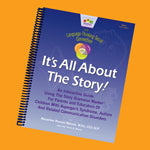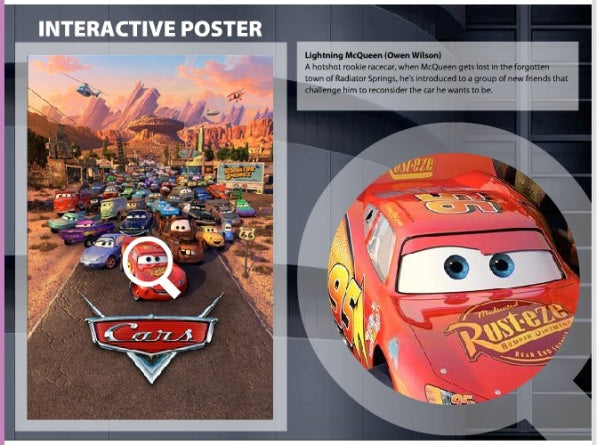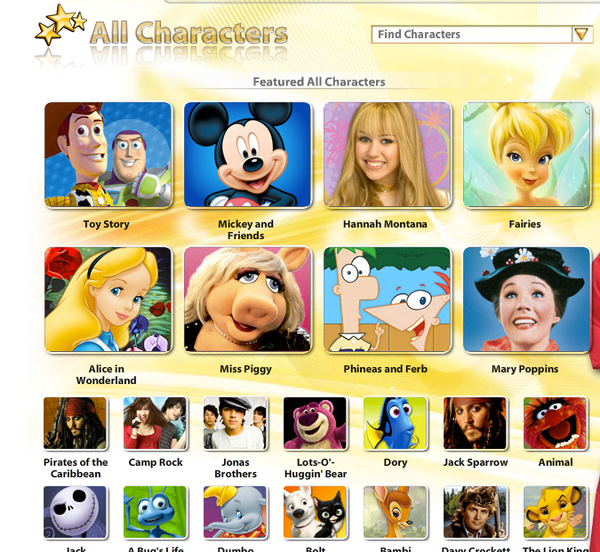Menu
-
- Home
-
About Us
-
The Approach
-
Linking Language & Literacy
-
MindWing Learning
-
Learning Resources
-
SHOP
-
Blog
-
- About MindWing
- Our People
- Contact Us
- Your Account
- Login
-
Spain (EUR €)

Character Social Thinking
August 18, 2010 2 min read
While running groups for students with social-cognitive deficits over the past years, I have frequently observed their difficulties with the story grammar element of character. Often, these students start telling a story in the vein of “Mike and I went to…” as the rest of the group looks at them blankly, thinking, “Who is Mike??” Or at least the facilitators are wondering who Mike is, since the other students may not even be thinking of the “expected behavior” that they should listen, let alone tease out character details!
 MindWing’s new Autism Collection Book 1, It’s All About the Story, provides a great series of lessons introducing the importance of character description and details. The Flip Chart Pages in Chapter 6, “Introducing the Character,” present the importance of character traits not only in stories, but also in social situations. However, with social groups, it is likely to be easier to start with dynamic materials and sets of characters the kids might be familiar with, rather than have them be instantly examining each other. The lessons suggest using magazines to collect pictures (an excellent idea) and in this post I am going to describe a few supplemental resources that can be used for group discussion and with the SGM Character Map.
MindWing’s new Autism Collection Book 1, It’s All About the Story, provides a great series of lessons introducing the importance of character description and details. The Flip Chart Pages in Chapter 6, “Introducing the Character,” present the importance of character traits not only in stories, but also in social situations. However, with social groups, it is likely to be easier to start with dynamic materials and sets of characters the kids might be familiar with, rather than have them be instantly examining each other. The lessons suggest using magazines to collect pictures (an excellent idea) and in this post I am going to describe a few supplemental resources that can be used for group discussion and with the SGM Character Map.
I am a big fan of the interactive character spread, a visual array that presents a variety of characters that are clickable or roll-over activated, in that further information is presented through a pop-up or sub-page when you roll or click on the character. A great example, though the site suffers a bit from advertisement infestation, is the Cars interactive poster (scroll down on the linked page to see poster). The activity allows you to move a magnifying glass across an array of Cars, and read descriptions and even hear quotes from the characters.

For more extensive Disney content, try their All Characters Page. This page would be very motivating to a group of kids with diverse interests!

Another page worth exploring is a complex image of Disney Characters through the years. Your web browsers’ magnifying glass tool (or Window>Zoom) will allow kids to “find” particular characters they would like to discuss. I’d particularly recommend The Muppets section for some great videos and visuals that would elicit character descriptions.
Last, but not Lost — well, yes, it is Lost — is one for you or maybe some teen clients that were into the late, great television epic (I had some fans in my groups)!
What could you do with these sites? Each would be great to explore with a laptop or LCD projector (Interactive Whiteboard would be even better), with a follow-up use of the Character Map. Perhaps a game of “I Spy” would allow kids to practice skills in a game format…
For more ideas on therapy materials and technology, please visit me at SpeechTechie or follow me on Twitter or Facebook. Thanks!
 MindWing’s new Autism Collection Book 1, It’s All About the Story, provides a great series of lessons introducing the importance of character description and details. The Flip Chart Pages in Chapter 6, “Introducing the Character,” present the importance of character traits not only in stories, but also in social situations. However, with social groups, it is likely to be easier to start with dynamic materials and sets of characters the kids might be familiar with, rather than have them be instantly examining each other. The lessons suggest using magazines to collect pictures (an excellent idea) and in this post I am going to describe a few supplemental resources that can be used for group discussion and with the SGM Character Map.
MindWing’s new Autism Collection Book 1, It’s All About the Story, provides a great series of lessons introducing the importance of character description and details. The Flip Chart Pages in Chapter 6, “Introducing the Character,” present the importance of character traits not only in stories, but also in social situations. However, with social groups, it is likely to be easier to start with dynamic materials and sets of characters the kids might be familiar with, rather than have them be instantly examining each other. The lessons suggest using magazines to collect pictures (an excellent idea) and in this post I am going to describe a few supplemental resources that can be used for group discussion and with the SGM Character Map.I am a big fan of the interactive character spread, a visual array that presents a variety of characters that are clickable or roll-over activated, in that further information is presented through a pop-up or sub-page when you roll or click on the character. A great example, though the site suffers a bit from advertisement infestation, is the Cars interactive poster (scroll down on the linked page to see poster). The activity allows you to move a magnifying glass across an array of Cars, and read descriptions and even hear quotes from the characters.

For more extensive Disney content, try their All Characters Page. This page would be very motivating to a group of kids with diverse interests!

Another page worth exploring is a complex image of Disney Characters through the years. Your web browsers’ magnifying glass tool (or Window>Zoom) will allow kids to “find” particular characters they would like to discuss. I’d particularly recommend The Muppets section for some great videos and visuals that would elicit character descriptions.
Last, but not Lost — well, yes, it is Lost — is one for you or maybe some teen clients that were into the late, great television epic (I had some fans in my groups)!
What could you do with these sites? Each would be great to explore with a laptop or LCD projector (Interactive Whiteboard would be even better), with a follow-up use of the Character Map. Perhaps a game of “I Spy” would allow kids to practice skills in a game format…
For more ideas on therapy materials and technology, please visit me at SpeechTechie or follow me on Twitter or Facebook. Thanks!
Leave a comment.
Comments will be approved before showing up.
